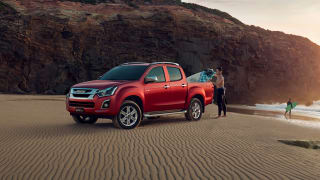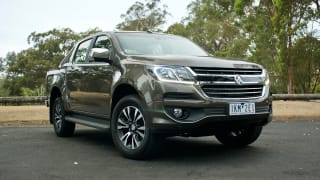The top-of-the-shelf Exceed's list price is $48,000, but our test vehicle costs $49,703 because it has the metallic paint ($590) and tow bar and tow ball ($1113, parts and fitment). Even with extra-cost options the Exceed is still at least $4000 cheaper than its closest-in-price rival, the $54,490 Nissan Navara ST-X, which remains one of the more affordable top-spec utes available.

And for the Exceed's relatively low price you get a nice-looking dual-cab ute packed with features including 7.0-inch multimedia touchscreen (with Apple CarPlay, Android Auto and six-speaker audio system), leather-bound gear-knob, steering wheel (with paddle shifters) and seats (also heated), as well as dual-zone climate control, keyless entry, dusk-sensing HID headlights, LED daytime running lights and fog-lights, wing mirrors with indicators, alloy side-steps, chrome sports bar and chrome accents, 17-inch 'diamond-patterned' alloys, and rear diff lock.
All Exceeds are only available as auto dual-cabs.
Active safety aids include emergency stop signal function, ABS with electronic brakeforce distribution, active stability and traction control, emergency brake assist system, reversing camera, as well as hill start assist and trailer stability assist. It does not have AEB.



















